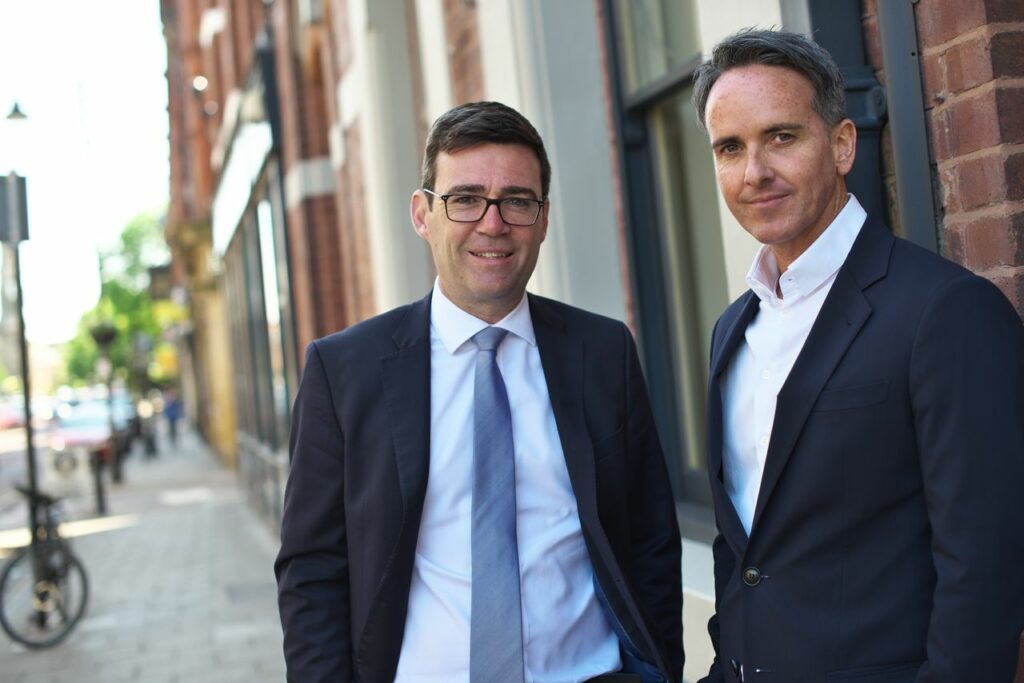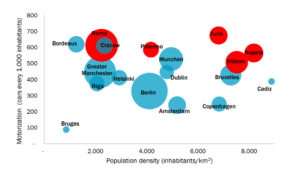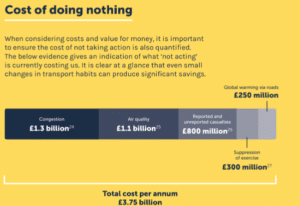How COVID-19 could lead to positive transformations, home and away
Practically every recipe for metropolitan area transport success, for healthier places, and for environmental transition to low and zero carbon, gets people out of private cars, even electric cars, on to efficient, clean, affordable shared transport for longer trips with those who can using human power for shorter trips. Walking, cycling and rolling. Mobility justice advocate Chris Paul argues that COVID-19 has shown that we are missing something else that could help tackle road harms for good.
Matthew Baldwin, Deputy Director General, Mobilities and Transport at the European Commission, introduced a key document for these times in his summation and response to the European Cycling Federation World Bicycle Day seminar on 4 June 2020.
Work carried out by Amsterdam management consultants Decisio, under the snappy title “Social costs and benefits of post COVID-19 lockdown mobility scenarios in Italy” projects a potential saving from worst case car-led recovery to best case active travel-led recovery of €40 billion per year - around 2% GDP of Italy (2019). Working from home is mentioned in passing. In other words if those deserting passenger transport in Italy to prevent COVID-19 transmission switch to active travel not to private cars good things happen. Do we have, to borrow and adapt from William Blake, the tygers of wrathful COVID-19 proving wiser than the horses of instruction? A virus more powerful in winning hearts and minds than years of patient lobbying with good evidence?
In Autumn 2017, in my last year leading on active travel for Transport for Greater Manchester Committee, with elected Mayor Andy Burnham’s newly appointed Cycling and Walking Commissioner Chris Boardman MBE in post, 25 years after his stunning Olympic individual pursuit Gold in the velodrome of Barcelona, we produced our manifesto, Made to Move. As Decisio did for Italy, we did for Greater Manchester. Our Made to Move “cost of doing nothing” appraisal projected roads as we use them now costing many lives lost or damaged and €4.2bn cash per annum in Greater Manchester. Around €90bn per year for the United Kingdom.
Our team assessed five major road harms: congestion, air quality, inactivity, collisions and casualties, and global heating; but stopped short of putting figures on specific savings from particular walking and cycling scenarios. The compelling Decisio analysis predicts benefits of substituting beneficial active travel not damaging private car travel for reduced passenger transport use under the cloud of COVID-19. Defying expectations that radical behavioural change, including re-moding to work from home, is too difficult, from people who have perhaps tried changing behaviour without a closed bridge, or widespread flooding, or a tragic global pandemic like COVID-19; Leeds University professor Greg Marsden finds (Transport Policy, April 2020), using real life disruptions in real life networks, that people are extremely adaptable; and that some changes, socially, environmentally and economically beneficial changes, outlive disruptions.
Home is where the work is
Working from home will, I believe, stick more than many imagine. Even modest uplift in home- and near-home-work could be a silver bullet for metropolitan transport woes. Individual workers, who had not worked from home before, have found it’s possible and, weighing advantages and disadvantages, they are willing to continue, every day or some days.
The Centre for Urban Studies at University of Amsterdam’s May 2020 paper “What can we learn from the COVID-19 pandemic about how people experience working from home and commuting?” is illuminating. Surveying 1000+ people, who can work from home, but mostly did not before COVID-19, they reflect the positives and negatives of working from home, but it is feelings towards commuting, and desires on working from home that really cut through. In round figures 90% of those cycling miss commuting, those in cars only 45%. Some 53% if allowed, 35% definitely, expect to work more from home post-COVID. About 45% want to resume commuting.
Over the years, organisations interested in “lean working”, cost savings and carbon reduction kudos have been facilitating home working with IT equipment, ergonomic furniture, video and phone conferences, and typically enjoying increased productivity. Adapting traditional offices for physical distancing; lifts, corridors, kitchens, stairwells; looks challenging and expensive. Why would they return to business as usual? In May the Law Society Gazette reported that Slater and Gordon, a top 10 UK law firm, will not renew the lease for their London office this September. It seems in their surveys of their team, 85% wanted flexible arrangements, and 70% to continue working from home.
This is in line with findings from Hubbub who found almost two thirds of 3,000 respondents in May 2020 wanted to work from home more and polled favourably on mental health and work-life balance. Beyond the interests of workers and firms policy makers know, from those relentless horses of instruction, that almost every downside of high road traffic impacts most on poor communities and the vulnerable. There is a responsibility to change.

Umbrellas making the shape of a heart at St Peter's Square, the heart of Manchester's Civic Quarter. One of many Manchester streets which has been closed to motor traffic, with cycles now as guests, over the years. The image has been used to promote the idea of a 20 minute city, or car free city. An idea whose time has come.
The photo was created by Jon Keenan and Creative Concern as their contribution to the book This Is The Place
Downsides may include passenger transport deserts, regressive and complex fare structures (in the UK at least), and poor levels of service. Then there’s the Catch-22 of owning cars that impoverish them or exclusion by lack of cars from favoured job markets. “Forced Car Ownership” as Dr Giulio Mattioli, TU Dortmund University, has termed it. Economically deprived communities experience the worst air quality, the greatest noise nuisance, more collisions and higher casualties, isolation and loneliness from busy roads dividing their communities; and globally the poorest bear the brunt of the carbon heating catastrophe.
In many countries the poor and vulnerable also bear the brunt of COVID-19 with clear correlations of the virus with poor air quality and high motorization (cars per person) but they have long experienced greater ill-health from cradle to grave via suppressed exercise, bad air and noise. The way we move now costs poorer communities dearly in health and in cash. Blood and treasure. Perhaps Blake’s Tygers can now drive us to a better place?
Relationship between housing density and motorization rate in European and Italian cities. Taken from Social costs and benefits of post COVID 19 lockdown mobility scenarios in Italy report
Decisio’s work shows Italy’s major cities, whatever their density, having high levels of motorization (cars per head of population) with Rome at similar density to Greater Manchester but with more cars. The City of Manchester, one of the 10 council areas of Greater Manchester would sit close to Amsterdam, at the side of Berlin and level too with Copenhagen, but our low motorization may be more to do with poverty than with sublime passenger transport and glorious cycling and walking infrastructure as it may be elsewhere.
And justice for all
There are enormous justice and equality issues. But that isn’t all. Moving in better ways will also bring tremendous benefits to local economies with top global innovators and job creators choosing sustainable, pleasant, active places, connected by buses, trains, trams and attractive cycling, rolling and walking. And reduced mobility costs for similar output mean more local spending and prospects for community wealth building. The Institute for Place Management (IPM) led by Prof Cathy Parker at Manchester Metropolitan University is holding a series of facilitated discussions allowing place managers to learn how COVID-19 recovery is progressing elsewhere.
In May we heard from Berlin, Chicago, Piedmont and Liverpool. In June, from Brussels region, Crete, and Barcelona. Barcelona seems most revelatory in terms of “Could working from home stick?” questions. Laura Lopez Puig, expert retail sector project manager and trainer, shared an extraordinary table. Barcelona Province (5.5m population) saw the previous 30 days retail sales rise to 71.89% year on year and upwards to 89.05% for the last seven days.
Barcelona showed similar improvement, from a lower base, 50.67% to 63.01%. News was better in the hinterlands. Terrassa (200,000 population, 25km distance) 100.59% and 117.48%; Rubi (75,000, 25km) 97.86% and 123.06%; and Moyá (6,000, 60km) 151.74% and 151.70%. The smallest, most distant had recovered fastest, and for now was resting higher than before. Satellite towns were out-performing the regional capital and their own history. These changes are because of work from home and shopping local. Will it stick? Some projections suggest 20 to 30% of those previously commuting from dormitory towns would continue to work from home and that others within Barcelona are considering relocating to towns and villages where cost of living is lower.
Manchester City Centre would love to see even the Barcelona numbers. At the end of May 2020 Springboard reported footfall here at -86.2% against a UK high street average of -76.3%. Getting restaurants and bars and general retail back in business will be the key. But how will workers and customers make their journeys? Our 2.8 million people and neighbours make 2.1 billion trips per year in Greater Manchester.
Using the regional centre morning peak as an example, passenger transit may reach 15% (currently 5% down from usual 60%) through retimed journeys, eased physical distancing, and compulsory face covering; cycling might reach 15% (usually 4%) if all our ten councils provide safe pop up lanes; those on foot might reach 15% (was 10%); and private cars 25% or so (c20%). Capacity may be 30% short, even with transit carrying 25% and active modes doubling.
Walking the walk...
Working from home will surely be needed here throughout the emergency and recovery, until an effective vaccine is available. If this sticks at the 50% plus rates predicted in Barcelona, indicated by Slater and Gordon, backed by Hubbub, and discovered by Amsterdam research, with those commuting in cars most likely to want to stay home. Even if the walking falls a little short of the talking, scope for other positive transitions, including in walking and cycling, will be enormous.
This could potentially take more traffic away than school holidays, when everything works so much better. Our orbital M60 motorway has remained clogged at peak hours, but traffic into the regional centre has decreased steadily in percentage and absolute terms for two decades. If a substantial fraction of office workers no longer drive to work the car mode at morning peak could crash below 10%.
More than half of the many parking structures in the city centre could be surrendered to affordable housing, green jobs, cycle parking, and to artists and the night time economy. Manchester bands rehearsing in Manchester city centre could be back! This may delight our music-loving mayor Andy Burnham and his advisor Sacha Lord, whose own promotions include The Warehouse Party, Parklife Festival and during lockdown United We Stream GM, an idea from Berlin. 20 million live streams, €500,000 to charity.
Rose Marley, CEO of the incubator and workspace Sharp Futures, recently worked with Manchester International Festival and Danny McDwyer’s Choir Project on Together in One Voice. Thousands of Mancunians filmed by themselves and by drones on their doorsteps, and musical heroes from Emeli Sande introducing the Bee Vocal Mental Health Choir, to Liam Gallagher and his enigmatic Don’t Look Back in Anger. In her role as Mayor Burnham’s youth skills and social economy advisor she could help turn any spare office space into buzzing hives of creative and pro-social start-ups. In June Burnham also appointed Olympian Diane Modahl to lead the Greater Manchester Young Person’s Task Force.
The cost of doing nothing. Image from Made to Move
In 2017 Greater Manchester Cycling and Walking Commissioner Chris Boardman and the team produced Made to Move outlining 15 steps to change the way we moved. The cost of doing nothing, calculated at £3.75bn (€4.2bn) per annum in Greater Manchester for the five main harms, could be reduced by a range of measures including better walking and cycling, better passenger transport and fewer motorised journeys.
Everybody's Business
Meanwhile there could be back to the future city centre living alongside burgeoning glass towers. Vaughan Allen who heads CityCo and the Manchester BID (Business Improvement District) envisages the upstairs of houses in swanky streets around Deansgate, recently closed to through traffic, returning to family homes.
Those like Creative Concern’s Steve Connor and Walk Ride GM’s Claire Stocks and myself, part of a collective of professionals, academics, businesses and lobbyists making the case for a 20-minute (largely car free) city, could get our wish sooner than might otherwise be the case. Against past trends are huge opportunities for local high streets and town centres.
Those working from home, or near home in co-working spaces that they can walk or cycle to, close to their kid’s schools, could become additional work day clientele, even tenants, for local shops and cafes. In one zoominar, organised by the Centre for Cities, I asked whether temporary challenge for city centres could be compensated for across the conurbation through a boost for towns and high streets. University of Manchester Professor Francesca Gains was enthusiastic, the London School of Economics' Professor Tony Travers accepting too, though one of a minority expecting a car-led recovery to what he feared might not be a V or even a U shaped recovery, but an L.
Could COVID-19 bring a pause to agglomeration economics? With towns and district centres getting a greater share of growth, less playing second fiddle to the city centre? Director of the Manchester based Centre for Local Economic Strategies Neil McInroy would certainly like to see this; green shoots of recovery coming from Community Wealth Building and “The Preston Model” (arguably invented in Manchester) where anchor institutions favour social value, as much or more than glass towers and the treadmill of chasing GVA growth?
When Prof Cathy Parker’s IPM combined with Manchester School of Architecture in 2019, for their All School Project, their theme was the high street. Fifty groups turned their minds to Chorlton, Gorton, Harpurhey, Northenden and Withington – varied contexts but common themes. For each place student proposals were largely car free, playful outdoor spaces for young and old, new buzzing walking and riding based economies.
Last word to Sacha Lord, Night Time Economy Advisor to the Mayor of Greater Manchester Andy Burnham: “We'll see dining spill out onto city centre streets, car parks and offices re-purposed and buzzing with energy and creativity, city centre living reshaping skylines and our towns and urban villages finding new leases of life. It's a reminder to me of how Greater Manchester keeps evolving and keeps rising to every challenge life throws at it."
Policy Takeaways
- Consider work from home as mobility. TFGM has excellent work with GM Chamber of Commerce and Timewise on working differently
- Cheaper, simpler fares please - €2 a day with season ticket but €7 for one off return for homeworker or part timer is not fair and does not support our wider policy objectives
- Mobility behaviour change is easier than we think, especially when an emergency takes possibilities away, or makes a better way attractive
- Mobility is a question of social justice; provide affordable universal level of service, factoring in the true social and economic costs of the the harmful and unjust way we live and move now
Author: Chris Paul is a consultant, writer and researcher and served as a Manchester councillor from 2011 to 2019 (on the Greater Manchester Transport Committee for seven years and as leading member for walking and cycling for five)


